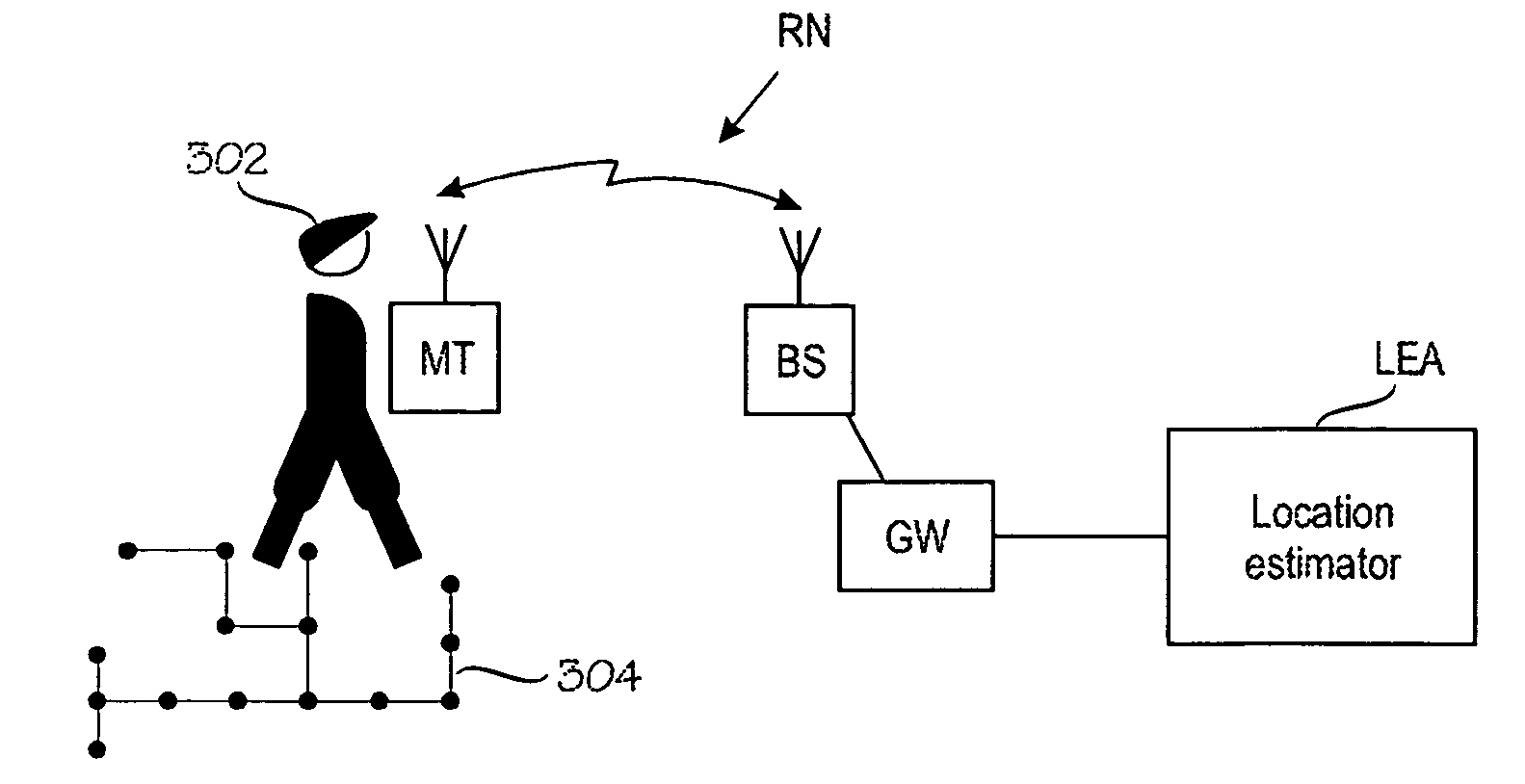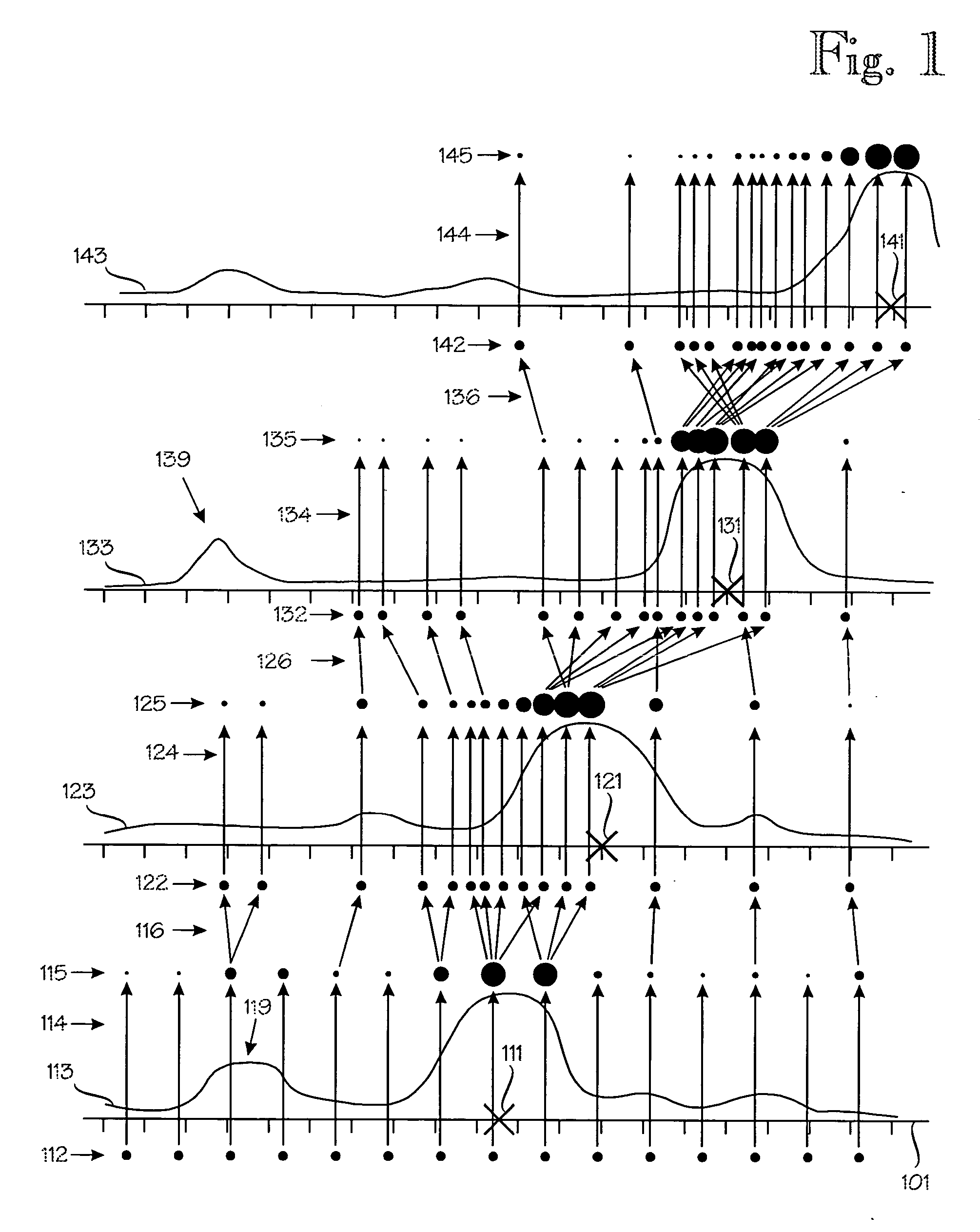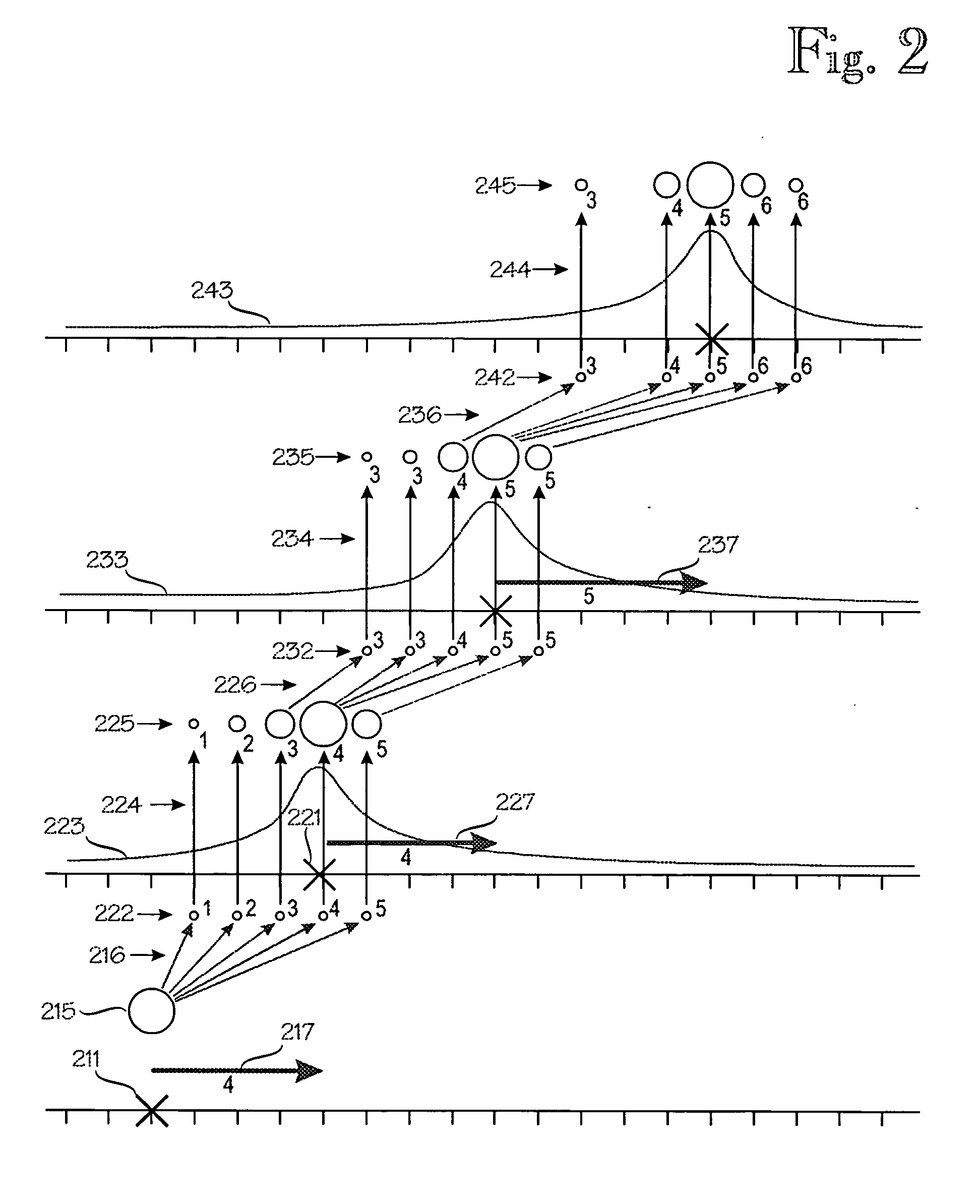Location determination techniques
a technology of location determination and location, applied in the field of location determination techniques, can solve the problems of high computational load, inability to model the movement of target objects using conventional techniques, and inability to achieve the effect of ensuring robustness and being easy to understand
- Summary
- Abstract
- Description
- Claims
- Application Information
AI Technical Summary
Benefits of technology
Problems solved by technology
Method used
Image
Examples
Embodiment Construction
[0092]FIG. 1 illustrates an operating principle of the invention. The description of Figure is based on the assumption that the target object's property set is or comprises the target object's location. Reference numeral 101 denotes a path of the target object. The path 101 is provided with evenly-spaced tick marks. In the description of FIG. 1, the path is assumed to resemble a track along which the target object can only move forwards or backwards (to the left or right in FIG. 1).
[0093]FIG. 1 illustrates a process of performing four consecutive location estimation cycles for the target object. Each estimate is made at a specific instance of time. Time advances from bottom to top. Reference numerals 111-116 relate to the first location estimate, reference numerals 121-126 to the second estimate, and so on. Reference numeral 111 denotes the target object's location along the path 101. Naturally, the target object's location 111 is not known to the location estimation routine and is...
PUM
 Login to View More
Login to View More Abstract
Description
Claims
Application Information
 Login to View More
Login to View More - R&D
- Intellectual Property
- Life Sciences
- Materials
- Tech Scout
- Unparalleled Data Quality
- Higher Quality Content
- 60% Fewer Hallucinations
Browse by: Latest US Patents, China's latest patents, Technical Efficacy Thesaurus, Application Domain, Technology Topic, Popular Technical Reports.
© 2025 PatSnap. All rights reserved.Legal|Privacy policy|Modern Slavery Act Transparency Statement|Sitemap|About US| Contact US: help@patsnap.com



